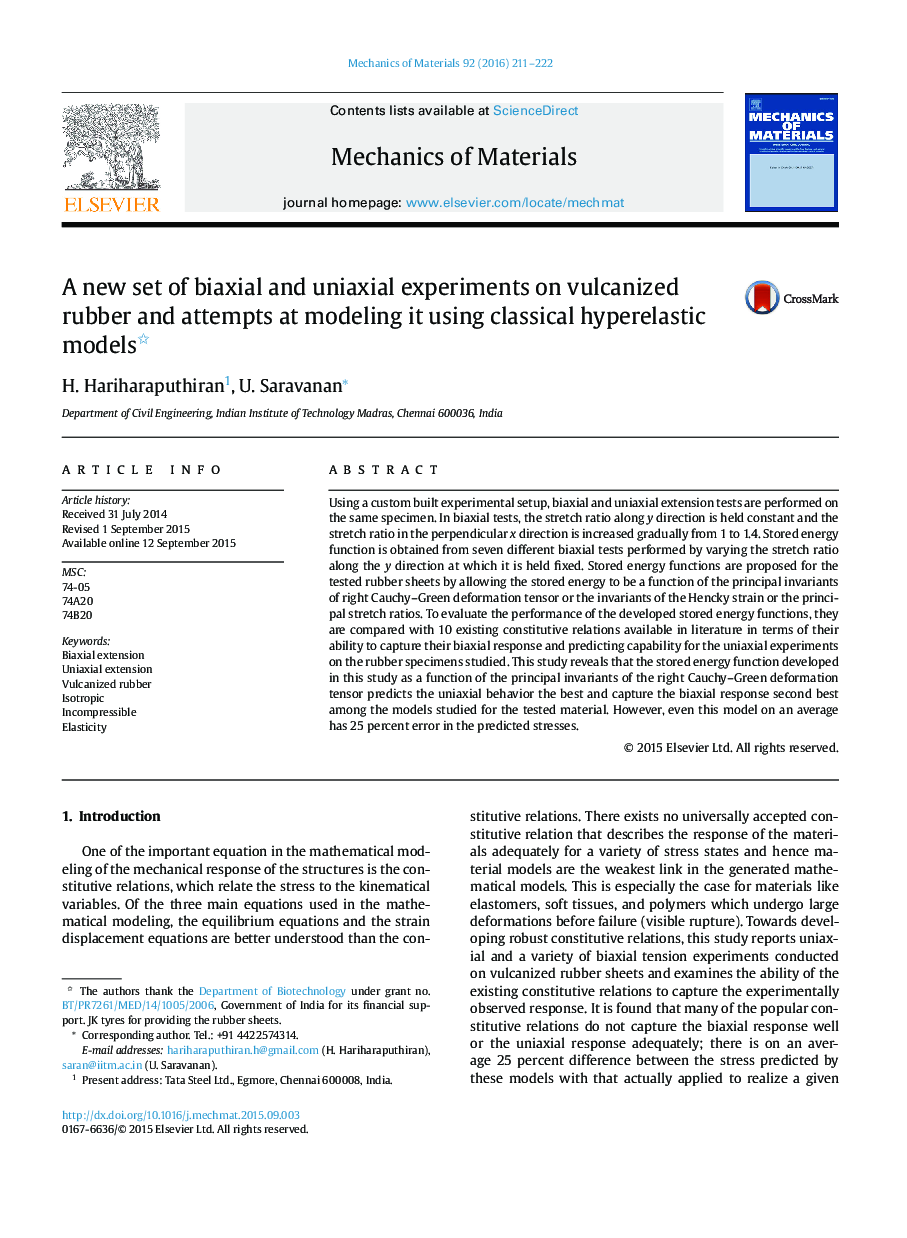| کد مقاله | کد نشریه | سال انتشار | مقاله انگلیسی | نسخه تمام متن |
|---|---|---|---|---|
| 797492 | 1467447 | 2016 | 12 صفحه PDF | دانلود رایگان |
• Performed uniaxial and fixed biaxial tests on the same rubber sheets.
• Used biaxial tests to find the constitutive relation.
• Evaluated the performance of 10 existing constitutive relations.
• A better constitutive relation based on invariants of Hencky strain determined.
• Best constitutive relation based on invariants of C arrived systematically.
Using a custom built experimental setup, biaxial and uniaxial extension tests are performed on the same specimen. In biaxial tests, the stretch ratio along y direction is held constant and the stretch ratio in the perpendicular x direction is increased gradually from 1 to 1.4. Stored energy function is obtained from seven different biaxial tests performed by varying the stretch ratio along the y direction at which it is held fixed. Stored energy functions are proposed for the tested rubber sheets by allowing the stored energy to be a function of the principal invariants of right Cauchy–Green deformation tensor or the invariants of the Hencky strain or the principal stretch ratios. To evaluate the performance of the developed stored energy functions, they are compared with 10 existing constitutive relations available in literature in terms of their ability to capture their biaxial response and predicting capability for the uniaxial experiments on the rubber specimens studied. This study reveals that the stored energy function developed in this study as a function of the principal invariants of the right Cauchy–Green deformation tensor predicts the uniaxial behavior the best and capture the biaxial response second best among the models studied for the tested material. However, even this model on an average has 25 percent error in the predicted stresses.
Journal: Mechanics of Materials - Volume 92, January 2016, Pages 211–222
